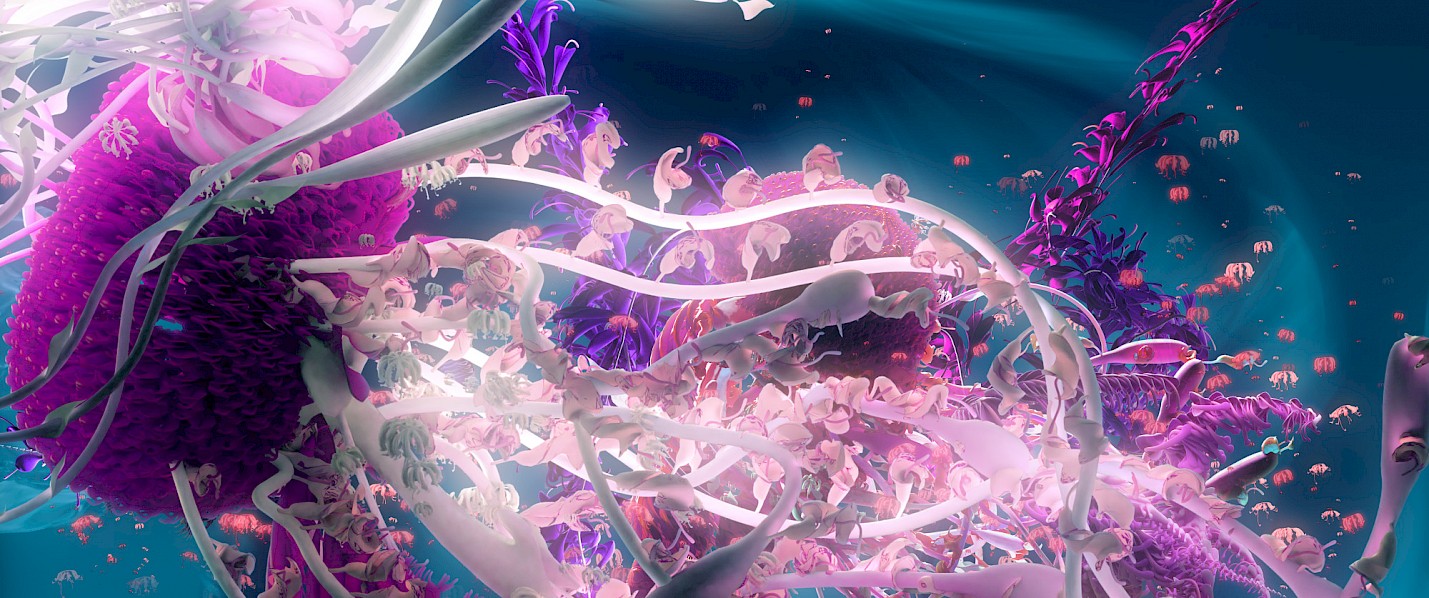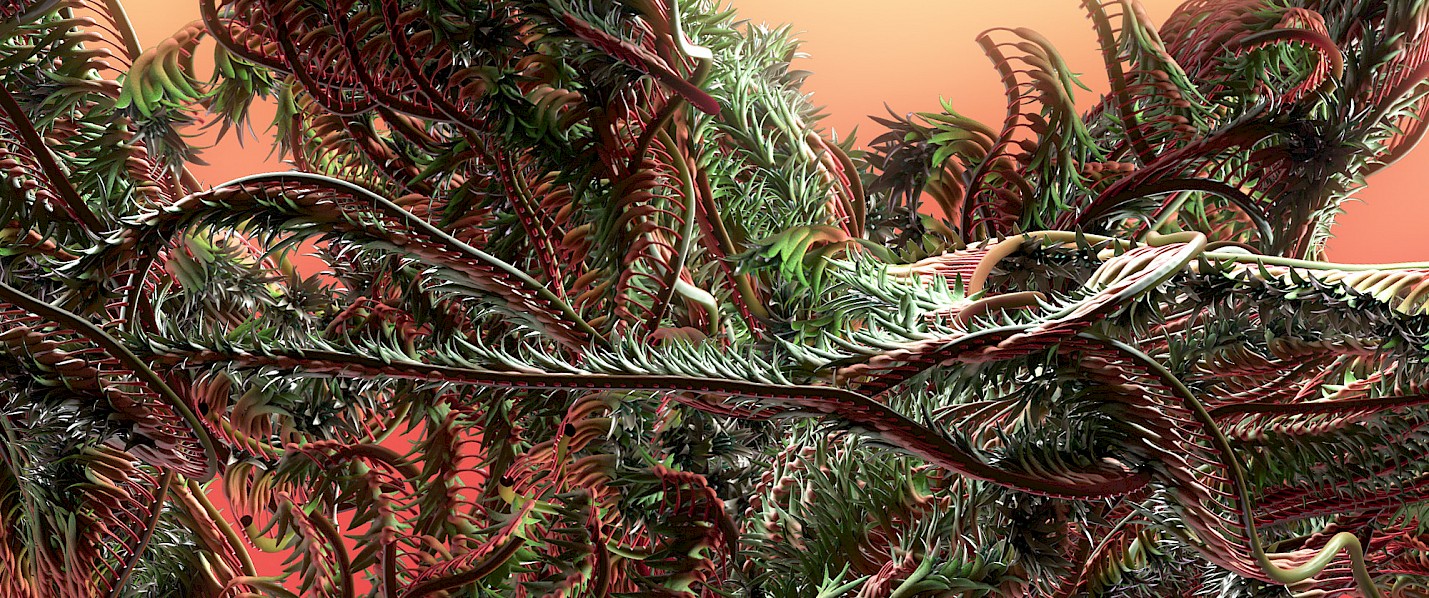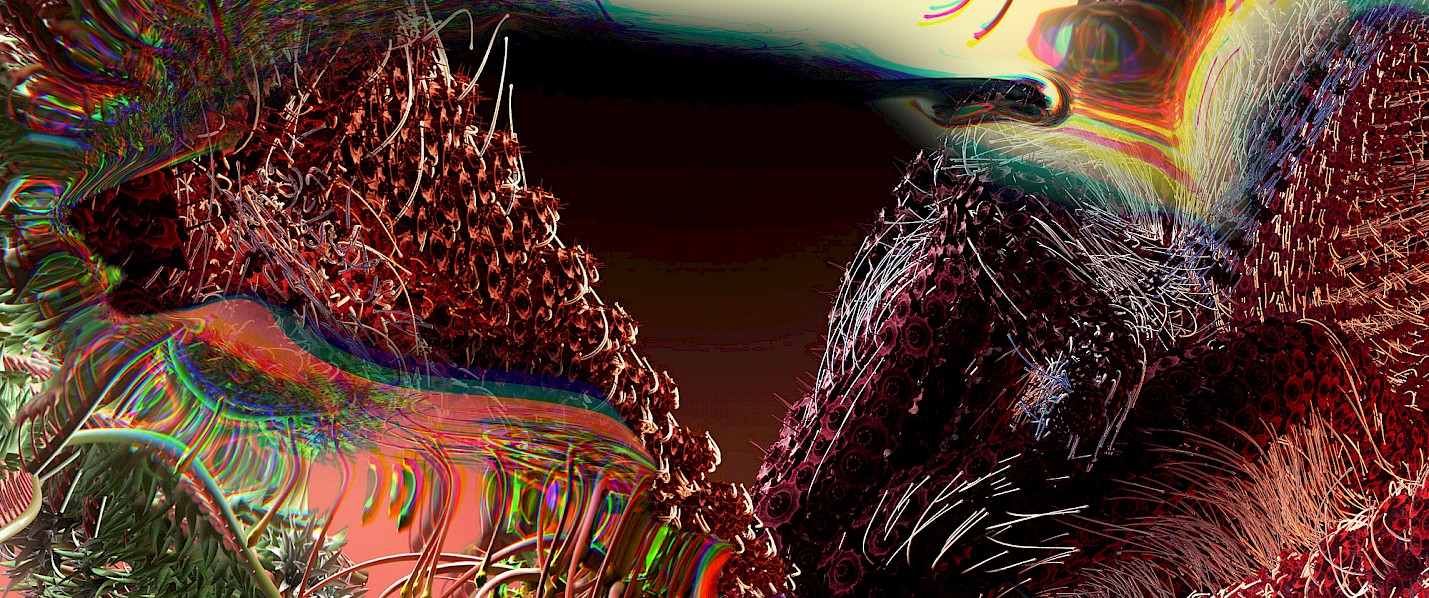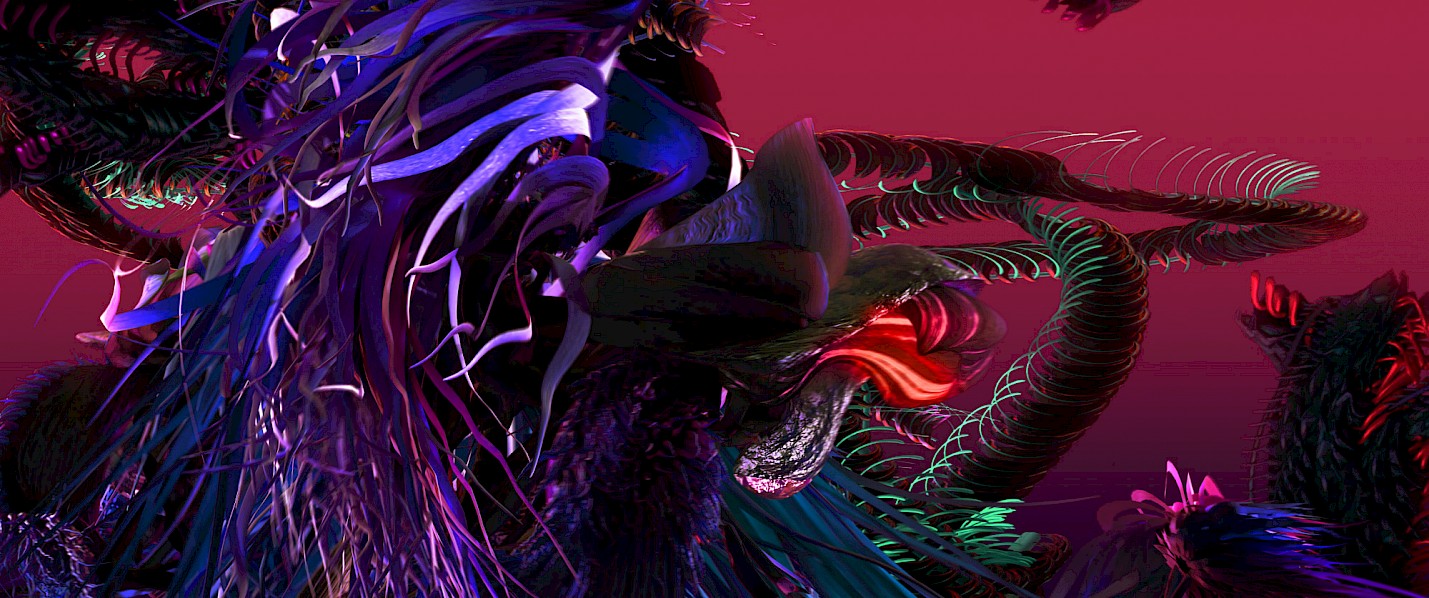Each year, the Sydney Opera House Sails are transformed into a grand-scale canvas using projection mapping during Sydney's Festival of Light, Sound & Ideas: Vivid Sydney. Motion designer and director, Brandon Parvini worked with Andrew Thomas Huang and BEMO to create the mesmerising content for 2019’s “Lighting of the Sails”. Described as an Austral Flora Ballet, the piece uses imagery of the native plants of Australia, adapted to mimic the choreography and motion capture of contemporary dance.
Brandon, before we delve into your work for Vivid Sydney, can you tell us how you got into motion design?
I originally went to school for Fine Arts - focusing on painting and sculpting. Software was always something I kind of had a handle on instinctively. Going to a university where people had all kinds of focuses, I eventually found myself making friends with a lot of the kids in the film program, which served as a bit of a gateway for me. I guess my luck (or mistake depending on how you look at it) was that little bit of happenstance. I hadn't been specifically drawn to film or film making classically, but it was around that time that the Criterion Collections starting floating around on DVD and I found myself glued to the works of Chris Cunningham, Goundry and the like. All of a sudden, bits of my movie-watching upbringing started to emerge: Pink Floyd's The Wall when I was 6, Alien when I was 8 I think, and way too many Sundays watching Liquid Television on MTV. All of the incredibly engrossing visual moments were suddenly made available to me in seeing these three mini art pieces made by the Goliaths of the industry. By stripping away the need for long narrative in order to create an emotionally engrossing moment. It made a mark, so when my friends started asking about how one might build a steady cam rig, or do a visual effect using Final Cut, I was up for a little challenge. I knew Photoshop, how hard can it be?
But moreover, I was excited to start tackling a new medium all together. I kept saying "yes" each time my friends asked if I thought I could help. Next thing I knew I was becoming a visual problem solver for them. I really didn't know what I was doing (nor do I now really) I just liked trying to figure it out. But low and behold, I had morphed into a VFX guy somehow. Jump forward a few years and some iffy risks I took - I was sitting with a group of guys I had been working with and was told by a production company that I needed to have a company to get bigger projects, so they had someone to sue if things went wrong. So, we threw up our hands and said, "sure let’s start a company." I think I was 23 at this point. When I started the company, motion design wasn't really a thing. We were a VFX group, but my background in fine arts and design always had me veering away from standard VFX over to something a little odder. So lucky for me, motion design started to bloom during that time, and I just kind of gravitated away from the green screens over to things I could flex other creative muscles in. From there, everything feels like a successive series of failures and occasional emotional wins to where I stand today.
When did you first hear of X-Particles and what made you buy it?
I was still in my early days and I tend to always go for the more overly complex problems to solve first in order to get comfortable with the software. I was trying to feel comfortable with Thinking Particles, and everyone was telling me that I needed to use 3DS or ICE if I wanted to do a particle sim. I was getting close to making the switch when a friend said to me that someone had developed a particle engine for Cinema 4D that was created with the designer, not a TD in mind. I tried it out, and sure enough I was able to art direct simulations with ease and deal with a system that felt like its linguistic roots shared the same fundamentals of Cinema. I was immediately sold on it. I could now take on projects and challenges I had shied away from. I started chasing down projects that I could explore and experiment with, using a straightforward framework that allowed me to iterate quickly and create at will. It functions for me like all good tools do; it gets out of the way of the creation process and just supports your efforts.
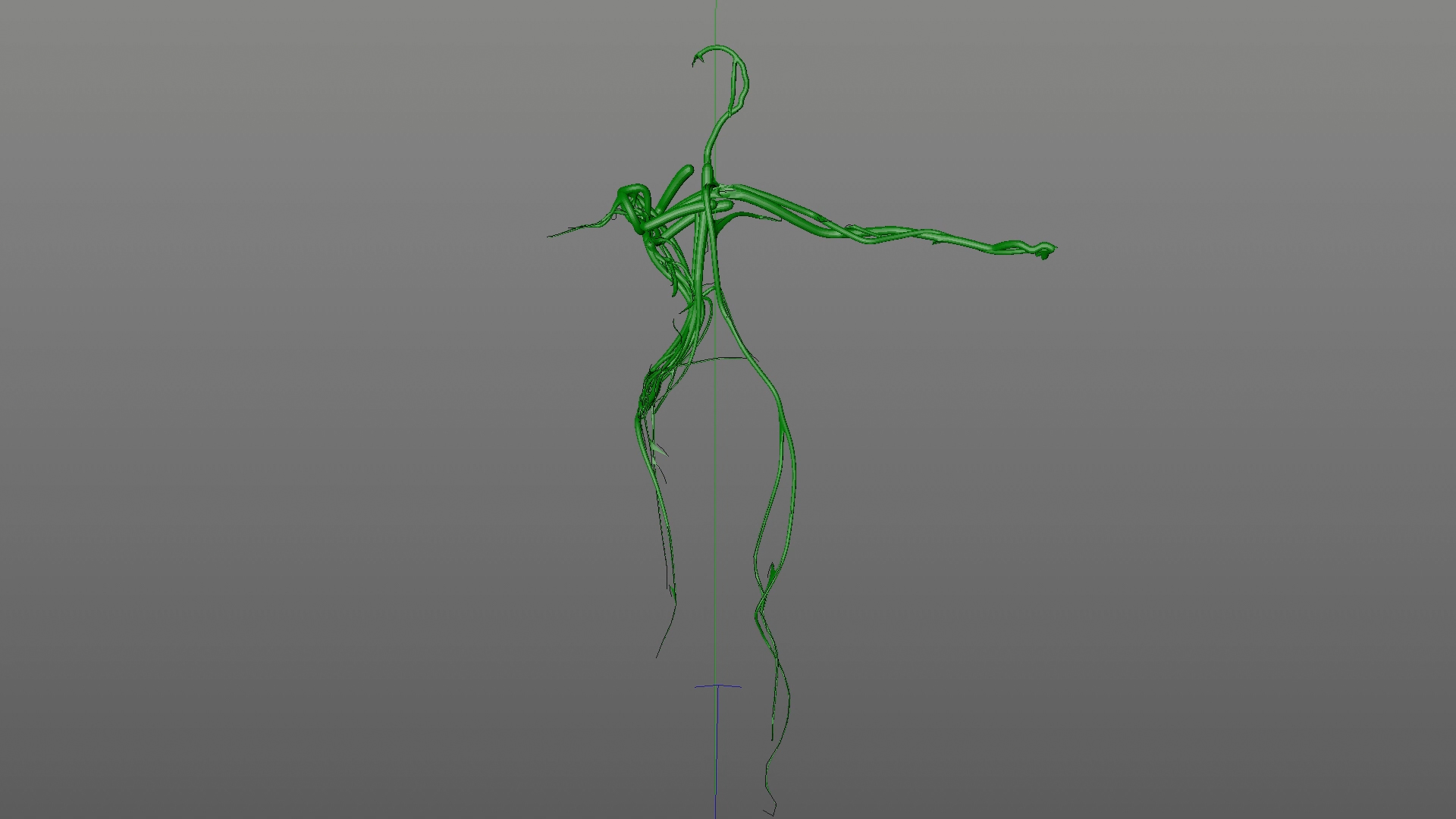
Can you tell us about your role within this piece and what you were responsible for?
This was another multi-hat job for me. We weren't going to have a large team, so I would evolve in my role over the course of it. Short answer, technical / design director, but that basically meant it was my job to figure out the harder problems in production and delineate where I could. Taking cues and guidance from Andrew, I was responsible for the design of all five floral characters, and then propose, lead and perform the execution of what ended up being 30,000 frames of 4K 3D animation for the final deliverable. I was thankfully supplied with fantastic models from Patrick Goski, so I didn't have to be a modeller for the floral elements. I ultimately was kitbashing, but everything else that had to be generated fell into my court. The team rallied around in a great way when it came time for the final editorial and scene composites, which was incredibly clutch as I was still kicking things out of 3D even in the last weeks before delivery.
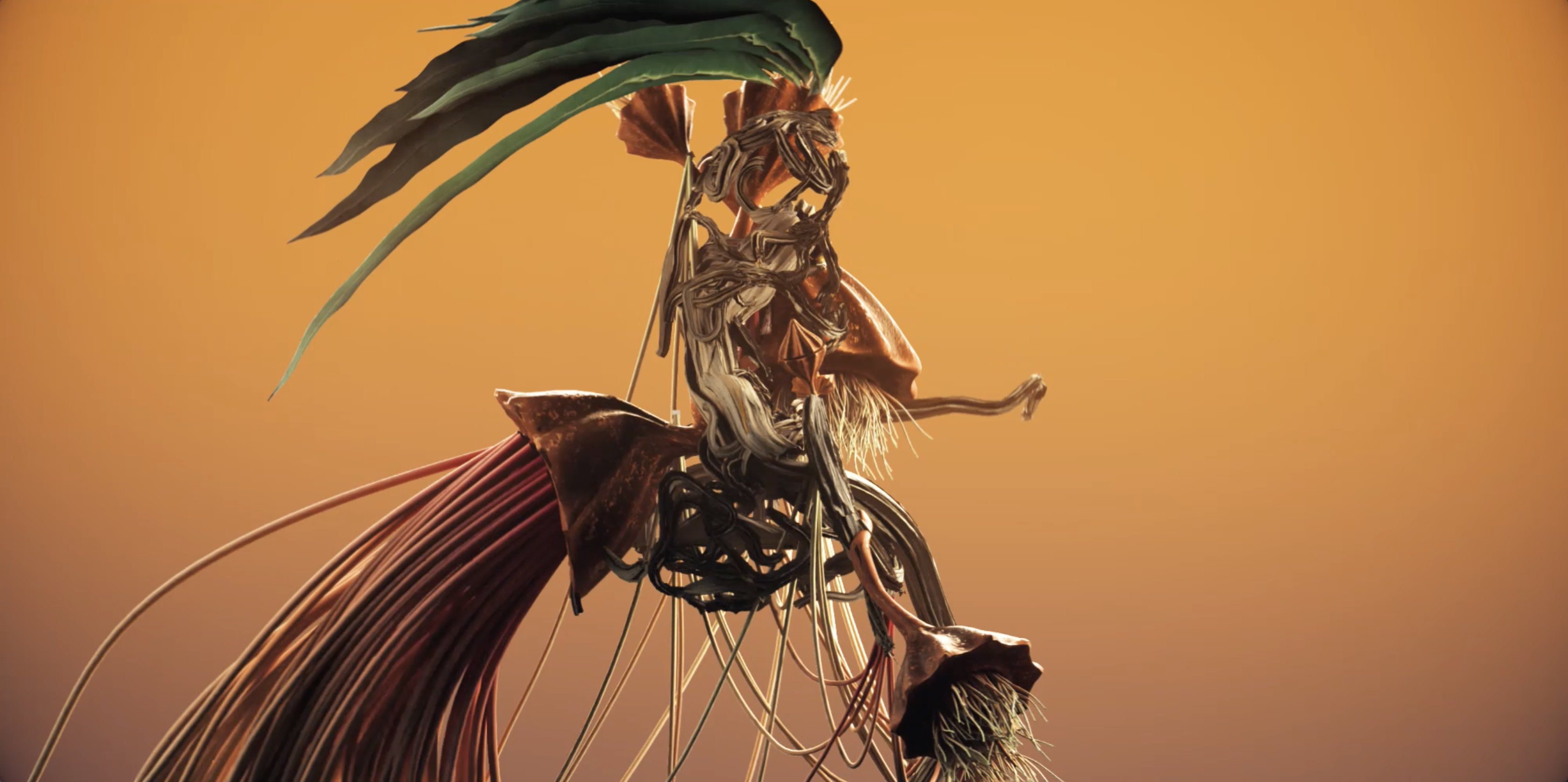
What is it like to work with such influential artists and studios like Andrew Thomas Huang and BEMO?
I never really appreciate who I'm working with until usually after the job wraps. Here and there you get a little star struck in meetings, but you just try to keep cool and pretend like you belong. I always try to see everyone as a potential collaborator and so that helps the dynamics as you approach someone. With BEMO and Brandon Hirzel (BEMO's founder and creative director), it was just natural. We had lunch a couple years back and I think I started my booking the next day. I don't think I've gone longer than two weeks since then without working or hanging out with the BEMO crew. Finding people who you have a complimentary resonance with is a massive component in doing good work. Finding people who push you and challenge you is instrumental in continued growth as an artist. The tight-knit support and crossfire of the team keeps everyone honest and emotionally invested in their work. We treat it like a family business, don't put it out if you're not excited to have your name on it.
Andrew is a special one for me. I met Andrew officially about a decade back now, he was working on Bjork's Mutual Core and in it deep, gutting his way through it. I wanted to support him on the project, but it wasn't going to work out for various reasons. However, I saw what he was doing and where he was going with the project and it quickly became the 'one that got away' for me. So, this past winter, when we were talking with him on another project, I was dead set on trying not to let the opportunity slip. He did not disappoint. His style of creative is fantastic to work with. Rooted in a fine art background as well, (we recently learned we may have been at the same school together and just not known each other!) we have a conceptual process driven underpinning to our approach. Experimentation is encouraged and supported by him in a fantastic way. It's rare to work with someone who says, “ok let's get weird” and mean it. The fact he has a background in graphic computing software (Puppetry, Maya, After Effects, etc.) as well, is massive, as many of the best directors I've worked with share this element. Having a director that is literate in the tools you use removes a lot of the issues in simply talking to a client. You're talking to someone as eager to explore and problem-solve along with you. When you're working with good people, it really stops mattering how the piece is received, as much of the success comes in the collaboration and creation process itself.
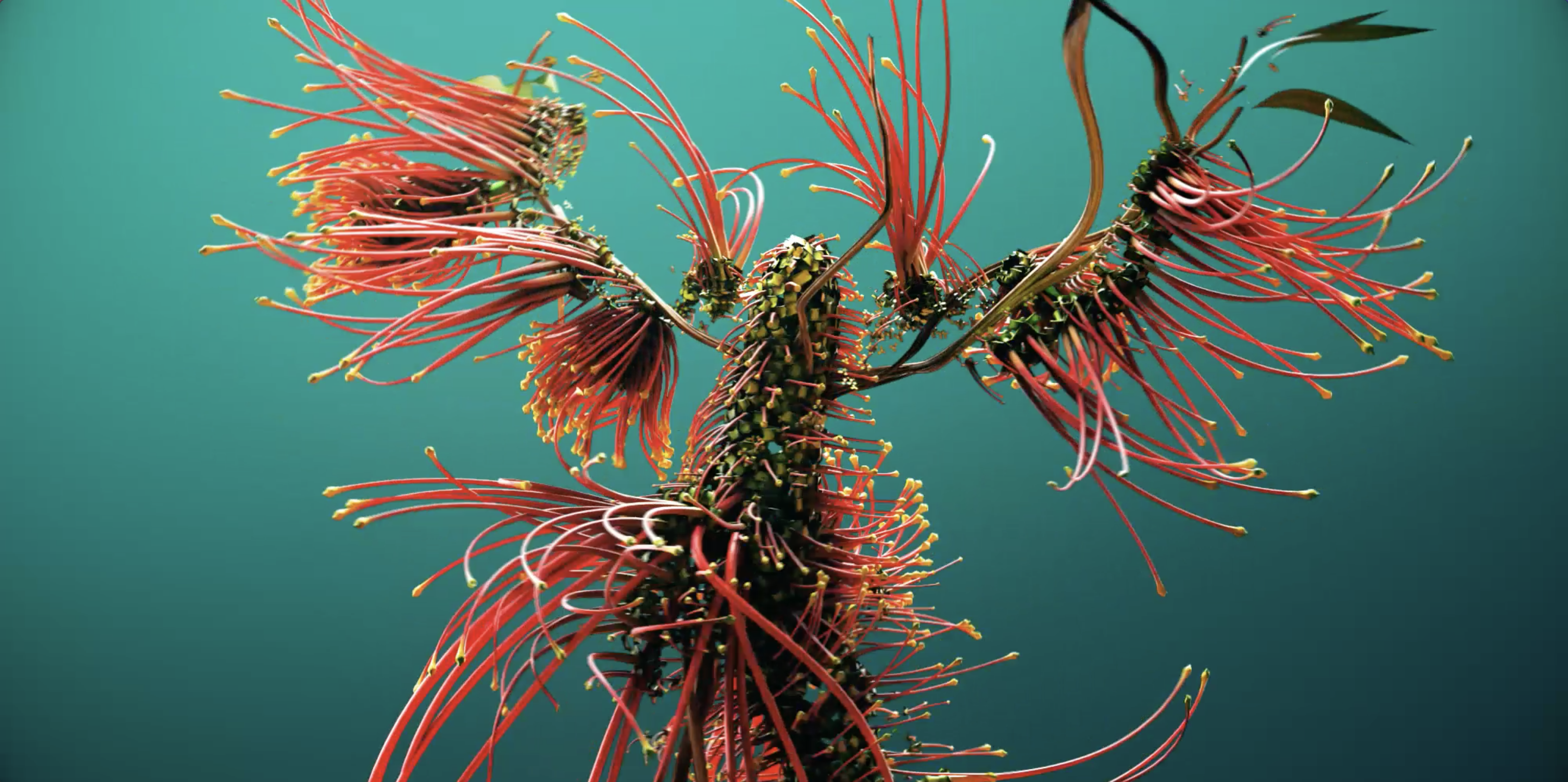
Described as 'A hypnotic fusion of contemporary dance and motion-capture technology', can you explain how you used motion capture to create these animations?
Motion capture we knew would be an integral part of this project. Andy was very upfront about that and I was happy to have it. Every solution drafted in this project came from a procedural place. We knew we didn't really have time for key-framing. We needed to have elegant solutions that would be light, efficient and durable in order to create this much media in the timeframe we had.
The choreography by Toogie Barcelo and dancer Genna Moroni was great for us to use. Due to the timing, we had to shoot the mocap very early in the process. So, we all showed up early in the creative development for the piece as a whole to capture material that would be flexible and allow us to pivot as the project became clearer in the ensuing weeks. We ended up taking a sample/kitbash approach for the mocap itself, breaking down longer dance and movement patterns into smaller subdivided actions and movement that would allow me to later stitch them together in Cinema 4D and create various routines for the CG dancer. This ended up playing out great for us as we discovered so much during the character development stage. What did we want to see? Was a leg important? Were the dancers to be just motion trails or actual physical beings? These were all up in the air at that point. I ended up crafting together five different 3-5 minute mocap animation sequences that strived to reflect the nuances and personalities of the various characters.
The dance itself was so important, beyond that fact it would be the engine that drove and activated the piece as a whole. Working in largely dynamic and reactive character designs meant this wasn't your standard character development of a base geometry that has been sculpted and rigged; this was something else. The characters became gestural in their design and nature, without the animation driving them they weren't the same character, the shapes and form that were created just simply weren't the same. I tried hot swapping the mocap between the rigs to test and it was interesting how off the motions felt when you used the mocap intended for the Orchid on the Waratah and vice versa. They lived somewhere between shape, form, and motion.
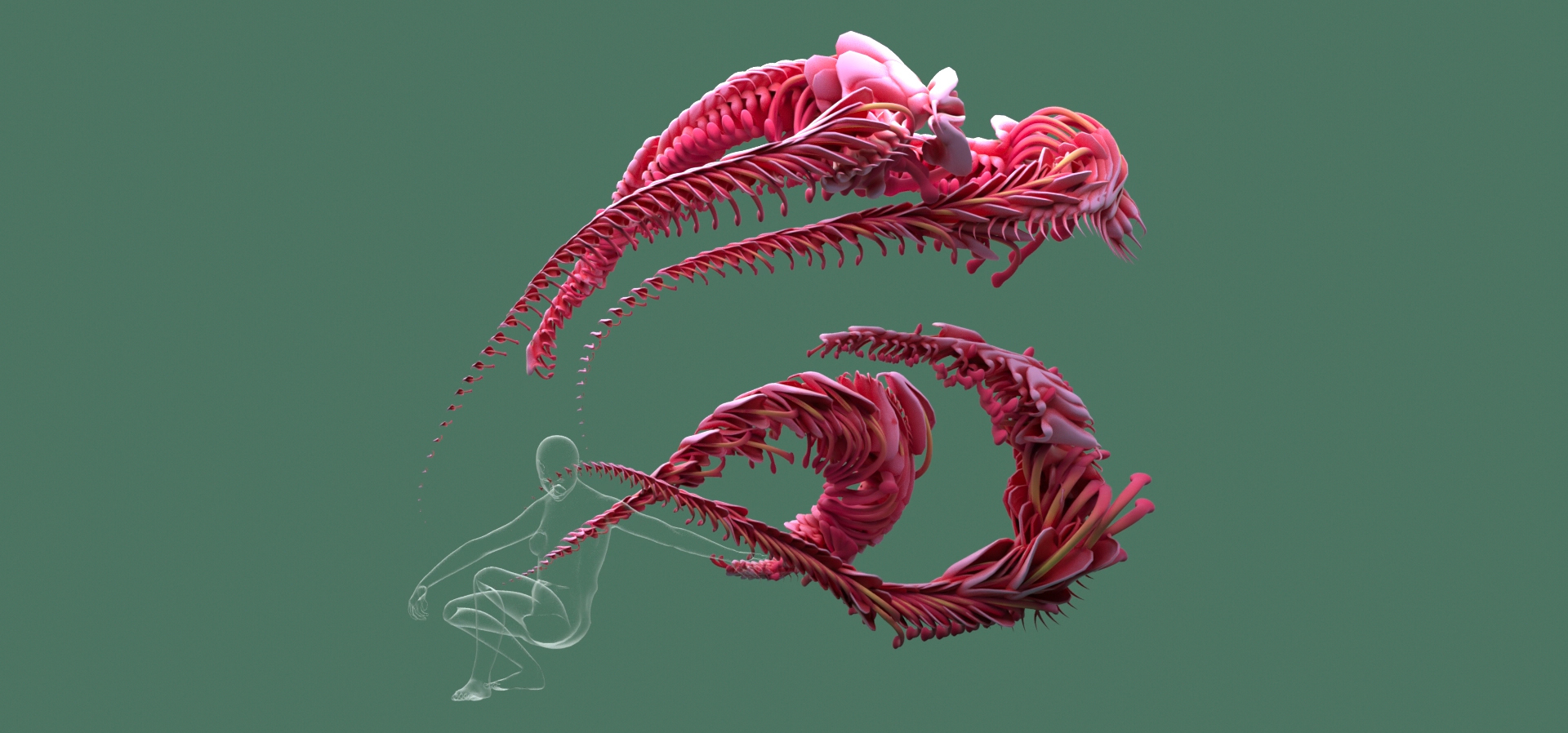
Can you explain how you used X-Particles within your workflow for this project?
As I mentioned previously, I generally use X-Particles as a fluid or particle-based simulation tool (as most do), but X-Particles has more to it than that. It’s a generative tool for iteration when used right. I nearly activated Houdini for this project to grab the secondary motions and keep things generative in their nature, but the round-tripping would have hurt the creative process and taken elements out of my hands, which I simply wasn't comfortable with. Greedy, I guess.
But then when I reproached the use of the Mograph, Hair systems and X-Particles for the character dev on this project, I started to get some exciting results. I think I went through 20 designs for the Orchid over three days. A lot of it was due to the fact I had a base female zygote I could clone and emit from and try out different looks quickly. Pivoting between various motion and Questions and Actions modifiers, I could get a myriad of different results and try out different looks for how I wanted the core and skin forms of the character to look. Each time I was happy with a result, I could bake it, tuck it back in a hidden layer and keep iterating. I was literally growing my own little flower creatures on the fly; a little bit of this and a little bit of that and before I knew it, I had made my own little library of elements. I could choose from these for the root structures I wanted to have served as the core of the Orchid, Waratah and Mallee Eucalyptus characters. We did do some more standard trailing and growth systems, generating roots and branches based on the topology of the Sydney Opera House. It was a flawless and almost easy win since we had perfect models of the Opera House. I knew as long as my cameras were good, I could grow all kinds of background and transition elements quickly and let X-Particles do what it's great at: taking over a scene and letting the particle systems ride for a beat.
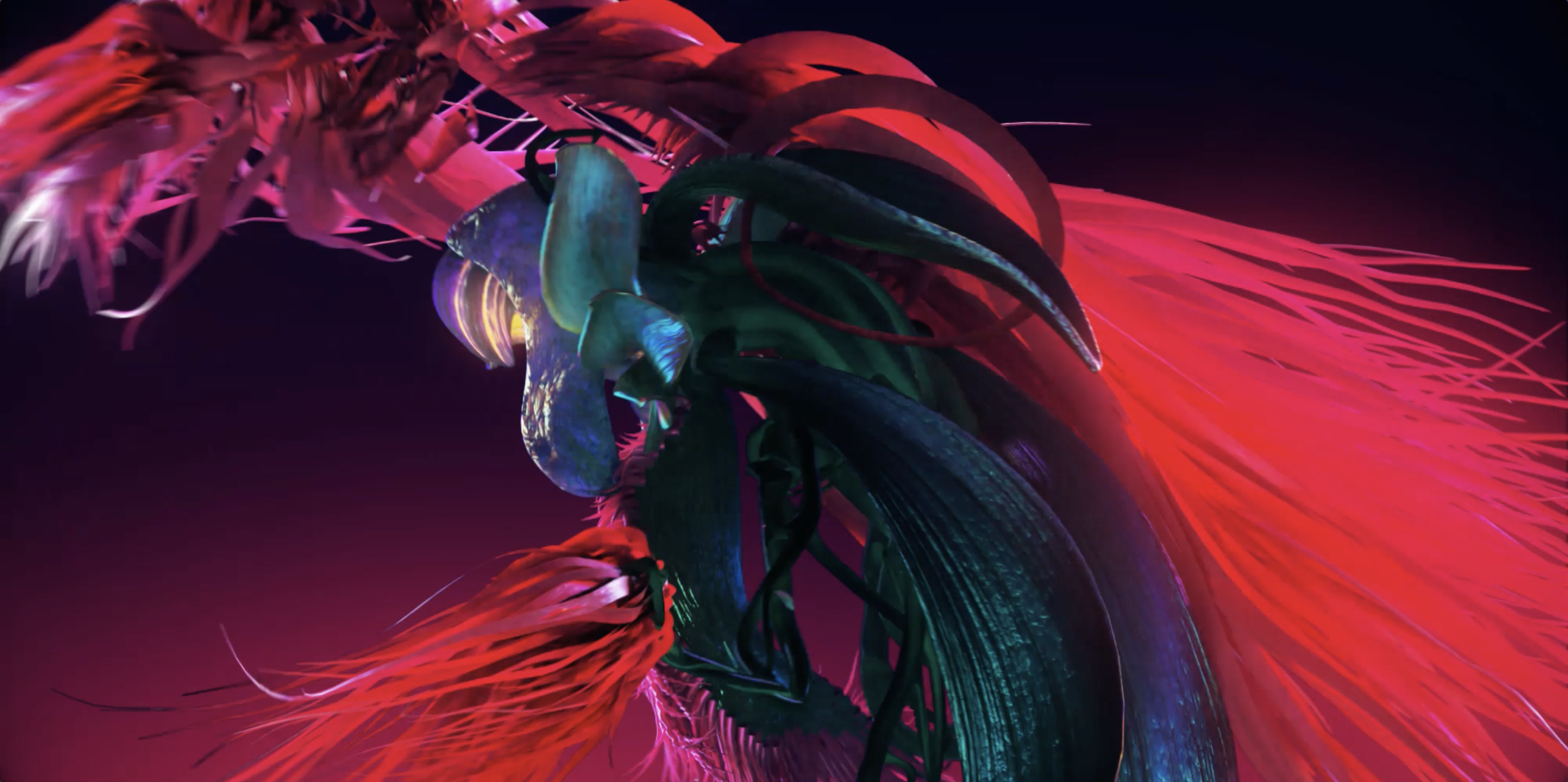
For character design, X-Particles wouldn't generally be the first point of call. What led you to use X-Particles for this project?
Speed and being in uncomfortable surroundings in the project. I didn’t have a ton of hands to help out, which meant I needed to cover a lot of ground fast. I had wanted to go into ZBrush for sculpting purposes but once I broke down the calendar, I knew I'd never get through all 5 characters in time if I took that approach. I needed to develop a system for growing these characters that wasn't too precious and could be pivoted. I hadn't worked with Andy before, so while I studied his work, I could be sure where he wanted to go when I started on the process of building out the characters. X-Particles allowed me to expand my toolkit of generative sources that on a whim, I could grow a new bit of coverage or fill and adapt my build quickly.
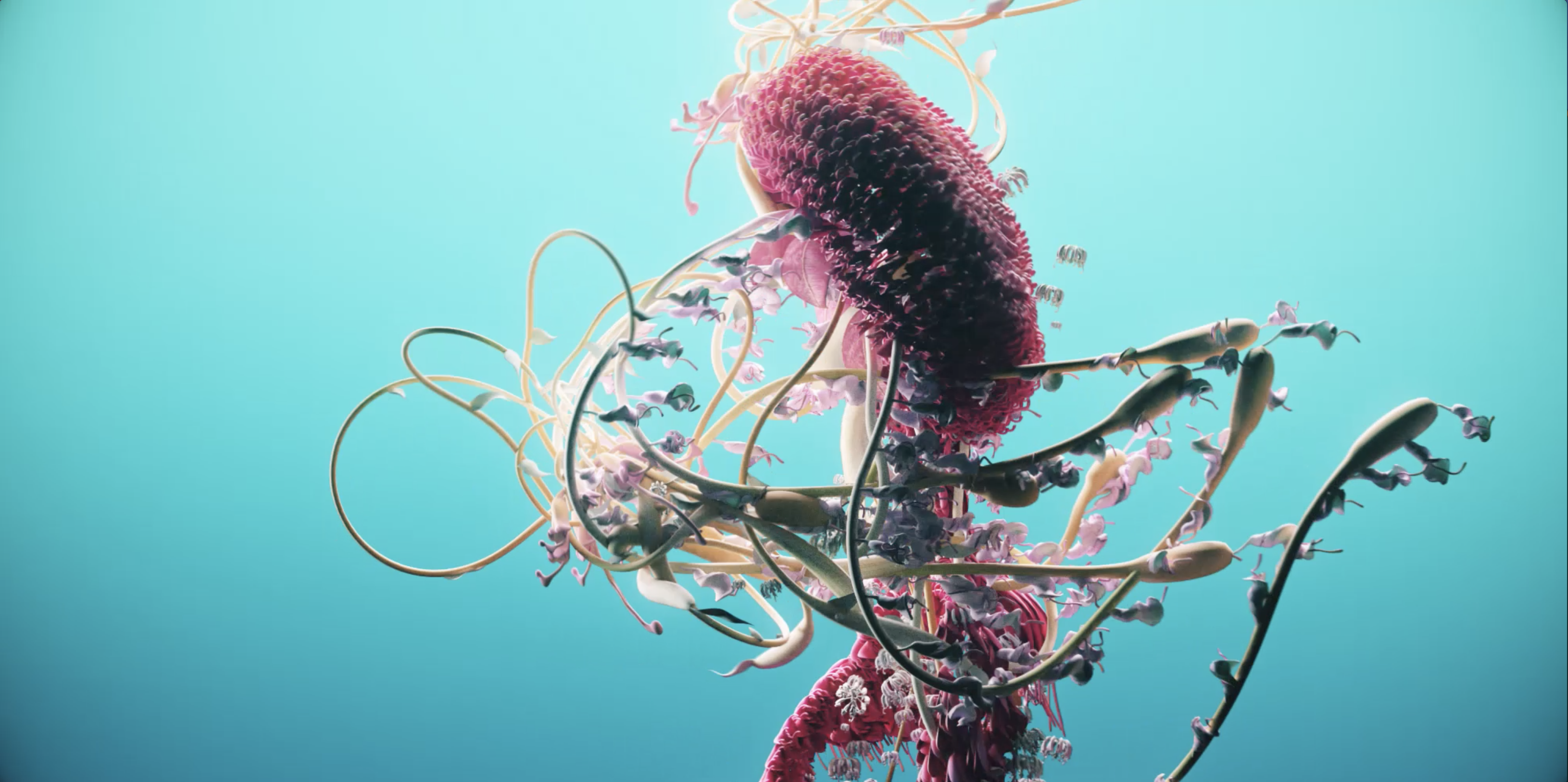
Before you go Brandon, can you give one piece of advice to aspiring motion artists who wish to make it big in the industry?
Boy, that's a loaded question. I'll say this, it's important to be capable, it's important to be kind and generous as a collaborator, supporter or leader, but for me; make sure at the end of the day you are doing something you are purely and deeply passionate about as an artist.
I've been doing this for a while and I still love doing it. I'm lucky, I know that, but some of that luck is from the amount of myself I leave in each project. You see passion when it's present in work. For me, I have found my pleasure in how I work. I love the process, the experimentation, the failures I go through in the creation, and for me, that's where art lives. The final frame is simply a relic of that process. So for others, those starting out; be self-reflective, look at how you work, what you want to be doing, tools you want to be using, chase that down. What would you want to be making even if there was no client?
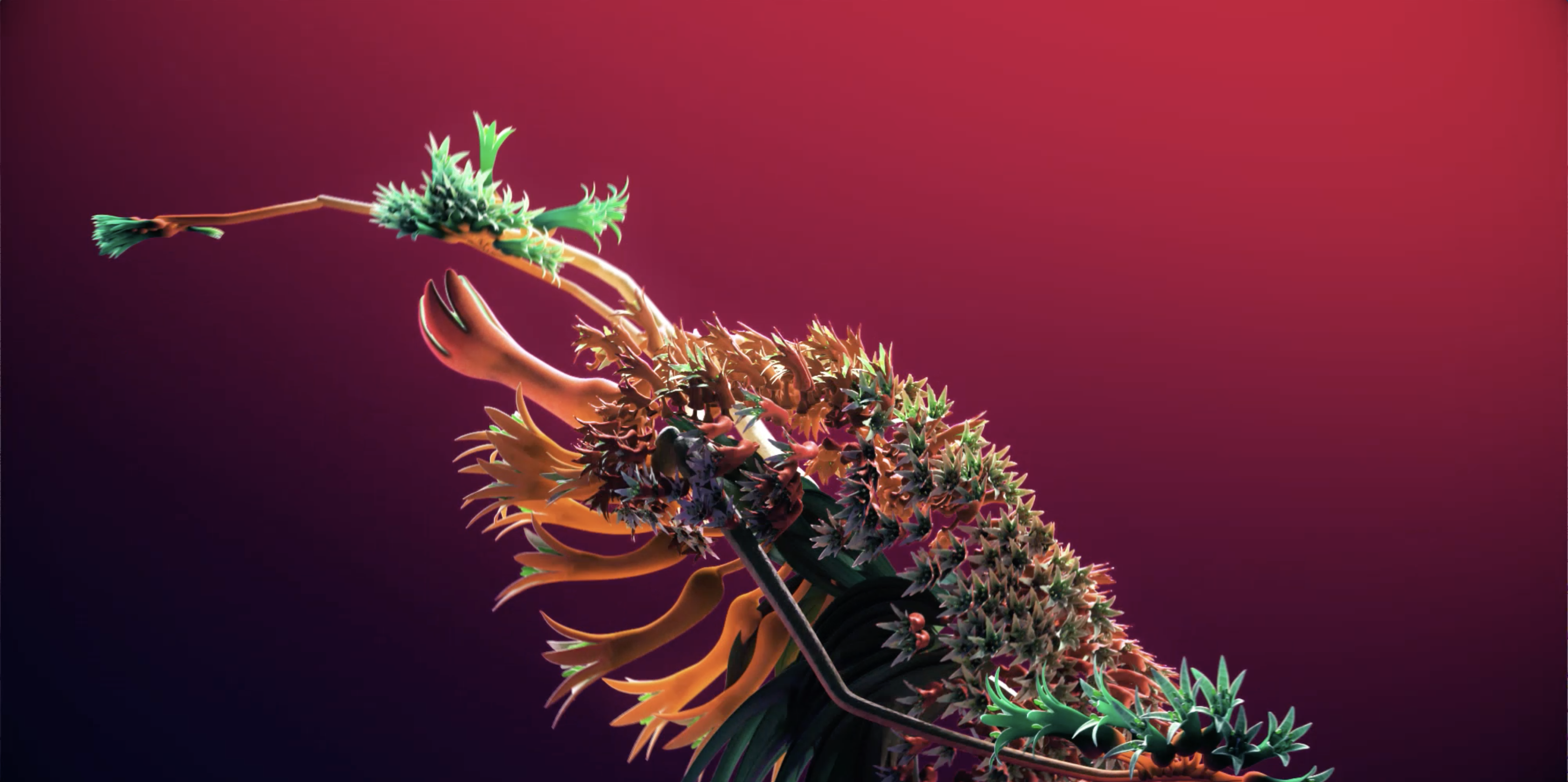
Director: Andrew Thomas Huang
Producer: Olivia Hantken
Design and Animation: BEMO
Executive Producer: Brandon Hirzel
Design/Technical Director: Brandon Parvini
3D Modeler: Patrick Goski
3D Artist: Kenneth Robin
Compositing: William Mendoza
Post Supervisor: Dennis Shin
Music Score: Kelsey Lu
Dancer: Genna Moroni
Choreographer: Toogie Barcelo
Motion Capture: Rouge MoCap

